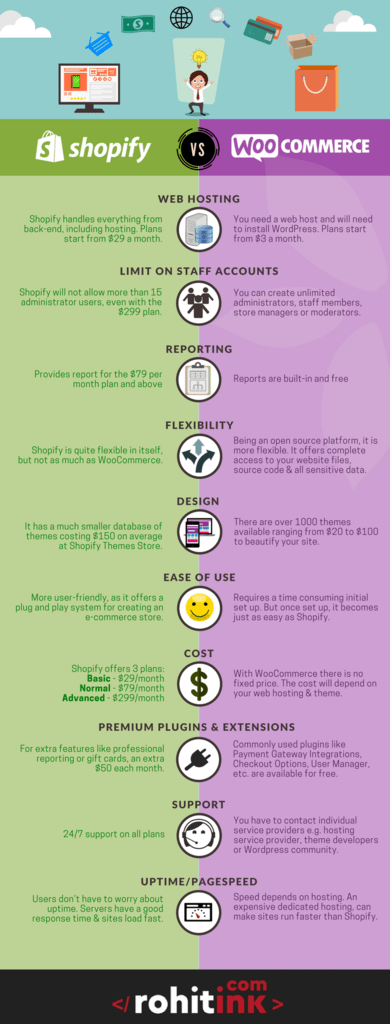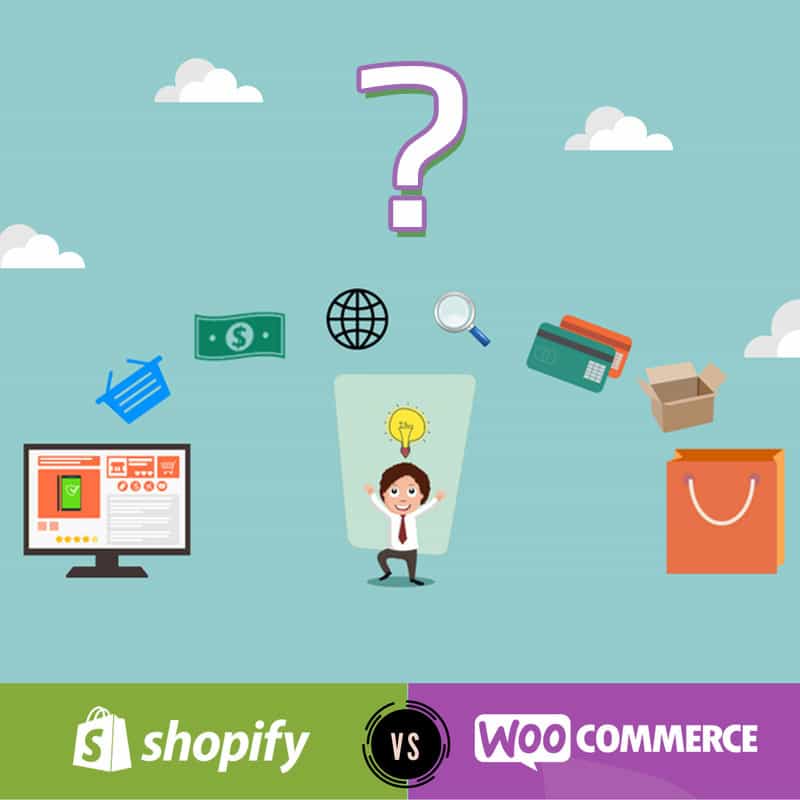First of all, congratulations to you. If you are reading this article it means you have decided to create an e-commerce website. An e-commerce website has the potential to develop into a profitable, long term business. You will have a few options concerning which platform (essentially your storefront) you want to use, with each having their own benefits. Before we begin, let’s take a look at the overall forecast of e-commerce.
- E-commerce sales are growing at a rate of 10% worldwide.
- Mobile e-commerce has grown steadily since 2009.
- 2017 is expected to have over 250 million online shoppers.
- E-commerce Industry is expected to generate $1.2 trillion in Sales this year
You don’t need to be an economic wizard to understand the importance of incorporating an e-commerce store into your business. As the trend above shows, more and more customers will do their shopping online. If you don’t have an online presence, you’re missing out. Now that you are more convinced about the importance of creating your own online store, let’s discuss which platform to choose.
Shopify and WooCommerce are the leading platforms to create e-commerce stores. They both have a huge user base. WooCommerce has over a million active users, while Shopify boasts of having over 350,000 merchants selling on their platform. Of course, the amount of users should not influence your decision, instead we will use the following criteria:
- Features
- Flexibility
- Design
- Ease of Use
- Cost
- Support
- Uptime/Pagespeed
Features
This is not the easiest one to start with, but this can impact your decision the most. Let’s see the various features offered by Shopify and WooCommerce.
- No Transaction Fees – Although your payment processor may charge fees, Shopify or Woocommerce do not.
- Unlimited Products – There is no limit to how many products you can add.
- Manual Orders – You can create orders manually for your customers. WooCommerce also has the ability to create a checkout page you can send directly to your customers.
- Coupons/Discounts/Gift Cards – Pretty straightforward in both of them. However a more expensive payment plan will be necessary to create them in Shopify, while it can be done with a free plugin in WooCommerce.
Now, let’s have a look at the following points. This analysis will help you have an idea of where these platforms differ, and therefore let you decide Is Shopify worth it or going with WooCommerce is a better option.
- Web Hosting – Shopify handles everything for you on the back end, hosting your e-commerce store for you. With WooCommerce, you need a web host and will need to install WordPress. Both of these are straightforward processes, and almost all top hosts provide 1 click installs for WordPress. Shopify plans start at $29 a month, while web hosting from the best companies start at $3 a month.
- Limit on Staff Accounts – Shopify will not allow more than 15 administrator users, even with the $299 plan. With WooCommerce, you can create unlimited administrators, staff members, store managers or moderators.
- File Storage – Unlimited in both. Although this is more important for WooCommerce, as it is dependent on your hosting package.
- Free SSL Certificate – Shopify offers the basic SSL certificate for free, but you have no control over the SSL certificate, and also cannot choose the certificate you want. With WooCommerce, you can buy your own certificate and associate it with your site. SSL Certificates cost anywhere between $5/year to $300/year depending on security and brand.
- Reporting – For the $79 per month plan and above, Shopify provides reports. WooCommerce reports are built-in and free.
Flexibility
Both Shopify and WooCommerce are highly flexible platforms. The edge goes to WooCommerce as you own everything because it is an open source platform. You have full and complete access to your website files, source code and all sensitive data.
You can move your site from one host to another. You can even build a WooCommerce store on your own computer with off-line mode (without internet), and once you are satisfied you can upload it to your server and make it live.
Both offer easy migration from one another. Plugins offer migration from Shopify to WooCommerce and vice versa. But the migration is going to affect a lot of things, most importantly your SEO.
Flexibility of WooCommerce enables you to create creative and unique e-commerce websites. For example, in the past, a loan intermediary Sambla used woocommerce on their store, even though they are primarily a loan intermediary. Similarly, a Gaming tutorials website could sell of digital powerups, etc through their website with woocommerce enabled.
Design
Shopify and WooCommerce sites can both be beautified with the help of themes. There are over 1000 WooCommerce themes available, and most of them offer many customization options to make your site look completely unique and amazing. WooCommerce themes are available as free and paid options. You can purchase WooCommerce themes starting from $20 up to $100. You can find absolutely stunning WooCommerce themes worth $45 at Rohitink.com.
Shopify has a much smaller database of themes compared to WooCommerce. Secondly, Premium Shopify themes cost on average $150 from the Shopify Themes Store.
Once again the winner is WooCommerce. When it comes to options for changing the look and feel of your website, WooCommerce is without a doubt more powerful.
Ease of use
Shopify is more user friendly than WooCommerce, partly because WooCommerce requires a time consuming initial set up that isn’t necessary for Shopify. Although, once you are set up WooCommerce becomes just as easy as Shopify.
The steps involved in setting up a WooCommerce website on a good webhost like Hostgator or Bluehost are:
- Purchase the Hosting
- Add your Domain
- One Click WordPress Install
- Log in to your WordPress Website
- Go to Plugins > Search for WooCommerce
- Install and Activate WooCommerce
It’s a quick process, and you can have WooCommerce up in running within 15 or 20 minutes.
The winner here is Shopify, as it offers what you would call a plug and play system for creating an e-commerce store.
Cost
The cost really depends on your requirements. Shopify offers 3 plans:
- Basic – $29/month
- Normal – $79/month
- Advanced – $299/month
Normal Package provides professional reports, abandoned cart recovery and gift cards, while the advanced package adds extra features like advanced report builder and real time carrier shipping.
With WooCommerce there is no fixed price. The costs can vary depending on your requirements. So, let’s calculate the cost of running and maintaining an average ecommerce store which gets around 3000-5000 Visitors Per day.
Web Hosting
- Shared hosting – starts at $3/month
- VPS hosting – starts at $20/month
Themes
- Free Theme – $0
- Premium Theme – $45 (One-time Purchase)
Premium Plugins and Extensions
Depending on your requirements, this can either be zero dollars or up to $200 (one time investment). However the most commonly used WooCommerce plugins like Payment Gateway Integrations, Checkout Options, User Manager, etc. are available for free.
So, it’s absolutely possible to run a successful good looking store by investing only $3 a month, and using a free theme. Often, free themes are just as professional as or even more so than a premium one. Checkout the free and professional looking WooCommerce Theme Store created by rohitink.com
With Shopify, instead of paying per plugin or extension, you pay $29 every month. And if you want more features like professional reporting or gift cards, you have to shell out $79 each month.
Support
Shopify comes with 24/7 support on all their plans. With WooCommerce the situation is a little different. If you need technical help with web hosting you’ll have to contact your web host, with most companies offering 24/7 phone support. If you need help with Plugins/Theme you will need to contact the developer of the plugin or theme through their website. WooCommerce also comes with a support forum on WordPress.org, where thousands of users actively participate in helping each other.
Shopify has a slight edge in terms of providing support. However if you purchase Shopify themes outside of Shopify, you have to rely on support from the theme or plugin developer.
Uptime/Pagespeed
Shopify users don’t have to worry about uptime. Shopify servers have a good response time and sites generally load faster than WooCommerce sites. With WooCommerce everything depends on your hosting. If you have an expensive dedicated hosting, you can make your site run faster than Shopify. If you purchase cheap hosting from shady websites, you will have to suffer from frequent downtimes. However, there are plenty of respectable hosting companies which offer quality and fast hosting at reasonable prices.
Conclusion
Shopify and WooCommerce both have their own strengths. If you are comfortable with spending $29 each month, and are planning to maintain your store alone with no staff members, then you can safely go with Shopify.
If you need more control over your store, then WooCommerce is the right choice for you. Your WooCommerce site is basically a WordPress website. WordPress is the single most powerful CMS out there. You can do a lot more with WordPress than you can with Shopify.
For instance, you can create a separate blog.yourstore.com if you have your own hosting with WordPress. You can even create multilingual stores or websites with WordPress, features that are not possible with Shopify.
So, both are good platforms with WooCommerce being more prepared for the future of e-commerce. So, pick the platform you think best meets your requirements, and if it doesn’t work out, you can always switch.
Bonus
I have also created an Infographic summarizing the entire article for all our loyal readers. You are free to share this infographic with your friends and spread the knowledge.



Thank You so much for this very detailed down to earth review. It was very helpful.